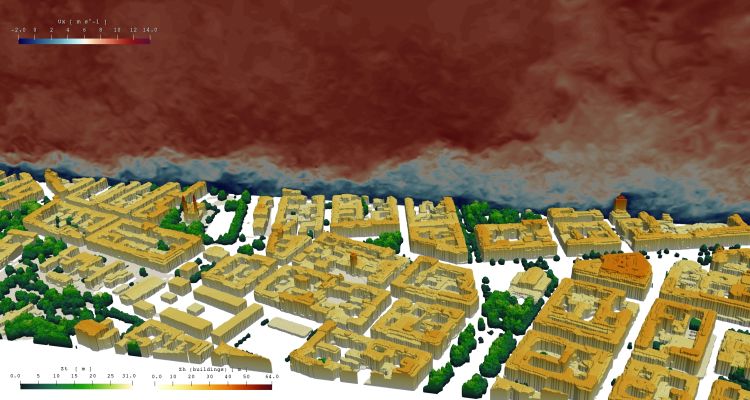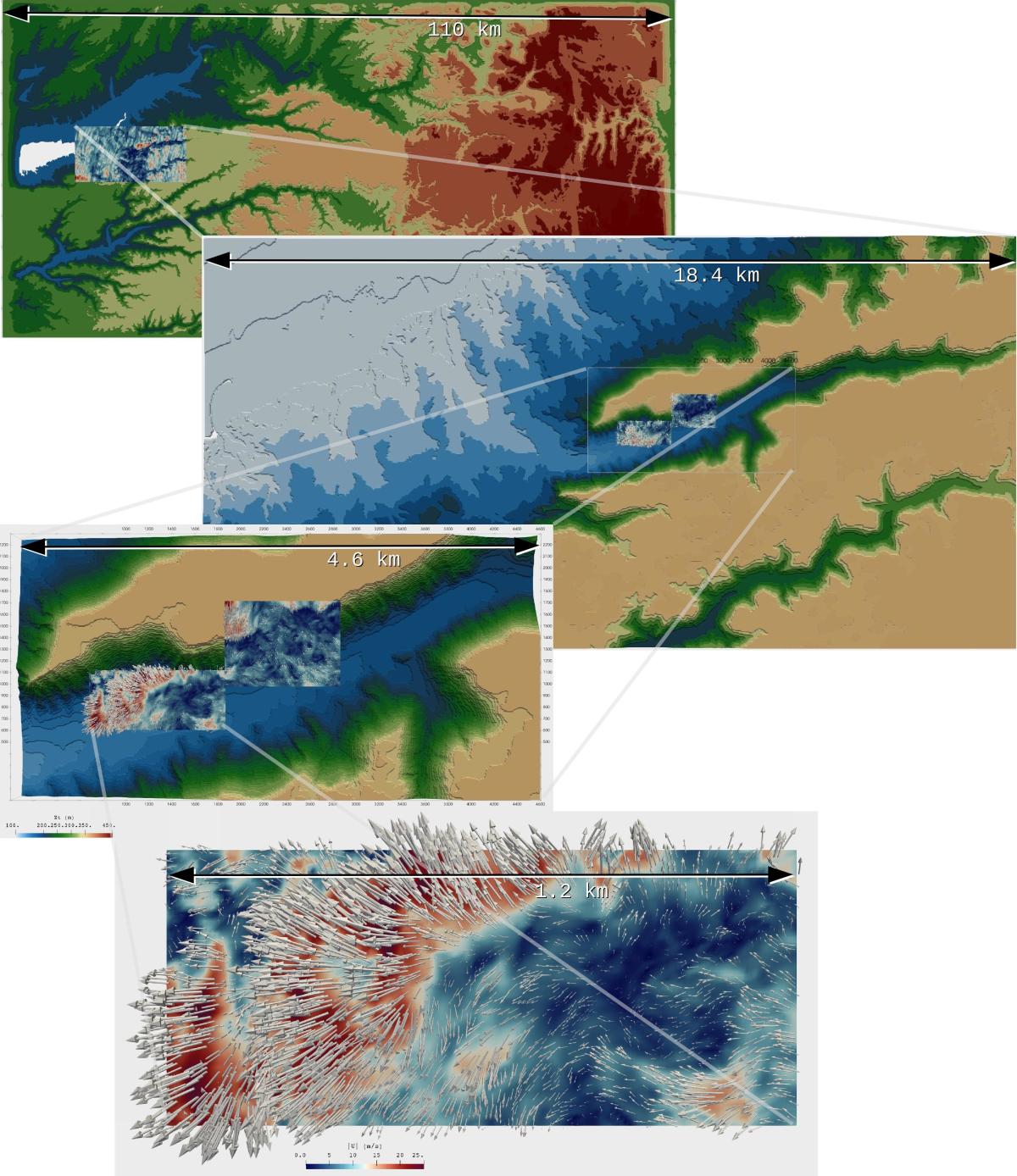Computational fluid dynamics research
Computational fluid dynamics (CFD) research in the Atmospheric Dispersion Modelling group is focusing 1) in particular on the surface layer of the urban atmospheric boundary layers, and 2) more generally on the atmospheric boundary layer dynamics in local scale.
Our CFD-based research utilizes very high-resolution large-eddy simulation (LES) which is employed and further developed for these research areas. The LES model called PALM developed by PALM group at Leibniz Universität Hannover is run on the Atos supercomputer called puhti and owned by CSC, see https://research.csc.fi/-/puhti. We also participate the development of the PALM model. We have developeda multi-scale self-nesting system in PALM together with the PALM group at Leibniz Universität Hannover.
The first research area has several motivations. Detailed, building resolving LES modelling of urban canopy-layer flow and dispersion opens possibilities e.g. to more detailed and more reliable air-quality analyses, contingency planning and post analyses of hazardous material release accidents. Moreover, it can be applied to city-planning purposes to achieve better air-quality, pedestrian wind comfort (and wind loading of buildings) and thus improved life quality as well as better energy efficiency in new urban areas being currently built or planned especially in Helsinki-region because of its increasing population.


The second research area includes especially highly detailed surface-layer wind analyses over complex terrains such as mountaineous environments and built environments. We have studied for example road and inland-waterway infrastructures. Such applications are multi-scale problems in which downscaling from meso-scale to very small-scale and high-resolution modelling for the areas of primary interest is needed, see the picture below.

18.12.2025
